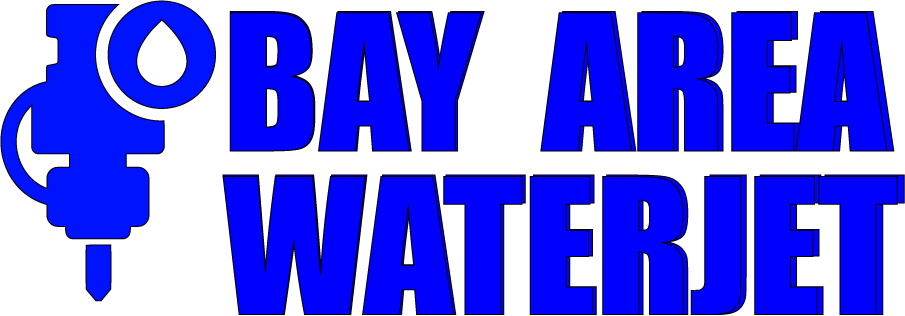What is Water Jet Cutting?
Water jet cutting is a high-precision manufacturing process that uses pressurized water—reaching up to 392 MPa (approximately 60,000 psi)—to generate a supersonic stream capable of slicing through a wide range of materials. This water is channeled through a finely engineered nozzle, accelerating to speeds up to three times the speed of sound.
There are two main forms of water jet cutting:
- Pure Water Jet Cutting – Utilizes only water to cut softer materials like foam, plastics, rubber, wood, and paper.
- Abrasive Water Jet Cutting – Adds abrasive particles (typically garnet) to the water stream to cut harder materials like steel, glass, aluminum, ceramics, and concrete.
How Water Jet Cutting Works
Water jet cutting combines high-pressure water flow with precision control to cut, shape, and form materials without generating heat. The process offers several advantages over laser or plasma cutting, such as:
- Cold cutting with no thermal distortion
- Precise edge quality with minimal finishing
- Capability to process complex shapes and tight tolerances
When an abrasive is used, the stream erodes material similarly to sandpaper but without altering its temper or creating heat-affected zones (HAZ).
Key Components of the Process
1. Measuring Kerf Width
Kerf width—the width of material removed during cutting—is typically around 0.04 inches for water jets. The kerf must be considered in design to ensure dimensional accuracy of the final part.
2. Initial Piercing
The cutting process starts with a “pierce,” which is typically wider than the kerf. Piercing can be done in several ways (stationary, circular, or low-pressure), depending on the material and application.
3. Tapering
Tapering refers to the variation in cut width from top to bottom. This can result in:
- Standard taper (V-shape)
- Reverse taper (wider at the bottom)
- Barrel taper (widest in the middle)
Tapering may not affect most applications but must be managed in precision tooling.
4. Pressurization
Water is pressurized using either:
- Linear Intensifier Pumps – Use hydraulic force to increase pressure up to 60,000 psi or higher.
- Rotary Direct Drive Pumps – Use electric motors to drive pistons without hydraulic oil.
5. High-Pressure Tubing
The pressurized water travels through cold-worked stainless steel or thermoplastic tubes designed for high tensile strength and smooth flow.
6. Cutting Head
The cutting head contains a small orifice (often ruby, sapphire, or diamond) to accelerate water beyond 90,000 psi (up to 2,500 mph). When abrasives are introduced, the stream can cut materials up to 10 inches thick.
Types of Water Jet Cutting
Pure Water Jet Cutting
- Best for soft materials
- Produces minimal moisture
- Operates with a thin, high-speed stream (Mach 2–3)
Abrasive Water Jet Cutting
- Ideal for hard or thick materials
- 1,000x stronger than pure water jets
- Cuts without heat, distortion, or mechanical stress
CNC Water Jet Cutting
CNC integration enables automated, multi-axis operations for complex cuts, forming, reaming, honing, and deburring with consistent accuracy.
Specialized Processes
- Abrasive Flow Machining (AFM) – For deburring and internal surface finishing of difficult-to-reach areas.
- Abrasive Jet Machining – For brittle or thin materials, producing intricate shapes with smooth finishes.
- High-Pressure Water Cutting – Enhances shaping of soft materials using elements like sapphire or ruby for durability.
Applications of Water Jet Cutting
Aerospace
Used for cutting jet engine parts, control panels, turbine blades, and landing gear components, especially in materials like Inconel, brass, steel, and aluminum.
Automotive
Utilized for interior components (carpets, insulation) and metal body parts. It integrates well with robotics, eliminates burrs, and reduces cleanup and material waste.
Medical
Explored as a surgical tool for cutting tissue with minimal bleeding or trauma. Water jets dissect tissues without thermal damage—ideal for sensitive procedures like liver tumor removal.
Glass Cutting
Water jets allow for intricate, crack-free designs on delicate glass surfaces, accommodating complex cuts with high precision and no thermal distortion.
Advantages of Water Jet Cutting
- Extreme Precision: Tolerances of ±0.003 to ±0.005 inch
- No Secondary Finishing: Burr-free, smooth cuts
- Versatility: Cuts virtually any material
- Eco-Friendly: No toxic fumes, waste, or byproducts
- Cool Cutting Process: No thermal impact on materials
- Ease of Use: Simple setup and programmable control
- 2D & 3D Cutting: Ideal for flat and formed components
